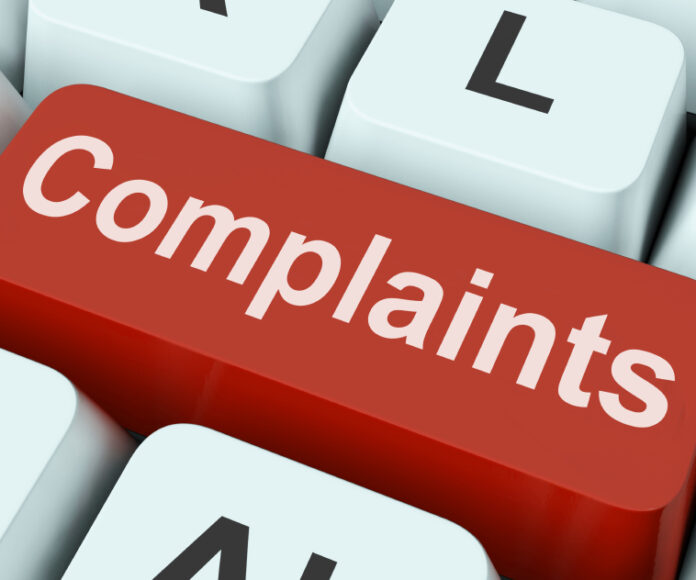
By Stacy M. Brown, NNPA Newswire Senior National Correspondent
According to a new study, second-rate customer service efforts have led to more consumer rage than ever, and patrons have become more belligerent when complaining.
Customer Care Measurement & Consulting (CCMC) and the Center for Services Leadership, a research center at the W.P. Carey School of Business at Arizona State University, conducted the National Consumer Rage Survey.
It found that “the alarmingly high rate of rudeness by customers was linked to things that have become normal in business settings.”
The survey found that businesses risk losing $887 billion in future sales because they handle customer complaints poorly.
That figure is up from $494 billion in 2020.
In addition to charting the trend of customer satisfaction with complaint handling over the past two decades, the study authors said the latest release of the rage survey breaks new ground by exploring the alarming incidence of customer incivility tied to what has become commonplace in everyday business settings.
“Customer rage explores the experience of complaining about a product or service problem,” the authors wrote in a news release.
They said that customer incivility looks at the growing problem of rude, disrespectful, and violent behavior in the marketplace that comes from social and political conflicts between customers and businesses, such as disagreements about politics, sexuality, culture, and faith.
“This first foray into customer incivility reveals that unseemly customer behavior tied to clashes in values between businesses and their customers may be the new normal, as nearly one of every two Americans encountered two or more acts of customer incivility in the past year,” the authors found.
According to the survey, the top customer rage highlighted in the study included:
• Seventy-four percent of customers reported experiencing a product or service problem in the past year, more than doubling since 1976.
• Product and service problems can be disappointing, costly, and distressing.
• Fifty-six percent of customers felt that the problem wasted their time (an average of one to two days of lost time), 43% cited a loss of money (an average loss of $1,261), and 31% suffered emotional distress.
• The level of “customer rage” is holding steady — 63% of customers experiencing a problem feel rage about the experience.
• Customers are becoming increasingly aggressive in their efforts to solve their problems with businesses.
• Forty-three percent raised their voice to show displeasure about their most serious problem, up from 35% in 2015.
Additionally, the percentage of customers seeking revenge for their hassles has tripled since 2020.
The authors found that complaining is increasingly becoming a digital phenomenon.
Digital channels such as e-mail, chat, and social media have unseated the telephone as the primary complaint channel at 50%, increasing from a mere 5% in 2013.
Complainants are also doubling down on social media shaming about their problems.
In addition to complaining directly to the company, 32% of complainants posted information about their most serious problem on social media sites — more than double those who posted in 2020.
Top customer incivility highlights of the study include nearly one in five Americans (17%) who have personally behaved uncivilly during the past year.
The authors concluded that Americans see this kind of value-based aggression toward businesses as a sign of bigger societal problems.
Twenty-two percent cited the moral decay of society as the primary reason customer incivility is on the rise.
The social contract about the norms for individually protesting businesses’ belief systems and values appears to be in flux.
Americans disagree with “civil” and “uncivil” behaviors for expressing their value differences with a business, the authors found.
While 50% of Americans view less aggressive forms of behavior (such as yelling, ranting, arguing, giving ultimatums, and social media character assassination) as uncivil, the remaining 50% see these behaviors as either “civil” or as “depends on the circumstances.”
Similarly, 25% view more hostile behaviors — like threats, humiliation, foul language, and lying — as civil or circumstantially acceptable.
“Even after 20 years of intensively researching customer rage, I remain astonished that — when sorting out ordinary product and service problems — acts of simple kindness and a sense of kinship are, all too often, in short supply,” said CCMC President and CEO Scott Broetzmann.
“The incidence and public displays of customers and companies misbehaving are commonplace, on the increase, and can be downright scary,” he noted.
Broetzmann continued:
“Perhaps of growing concern now is that customer hostility appears to be mutating like a virus. The expressions of malice and aggression triggered by differences in the value systems of companies and customers — so-called customer incivility — only fuel the fire.”
Broetzmann said defusing customer rage is not rocket science.
Thomas Hollmann, executive director of the Center for Services Leadership at ASU’s W. P. Carey School of Business, said many customers are looking for repairs or refunds. Still, they also hope for a sincere apology and acknowledgment of their complaints.
“These no-cost actions show that the company cares, is listening to the customer, and values them,” Hollman stated.
“It’s up to brands to communicate as humans with their customers. A sincere “I’m sorry this happened,” can turn a potential blowup into a lifelong customer.”


